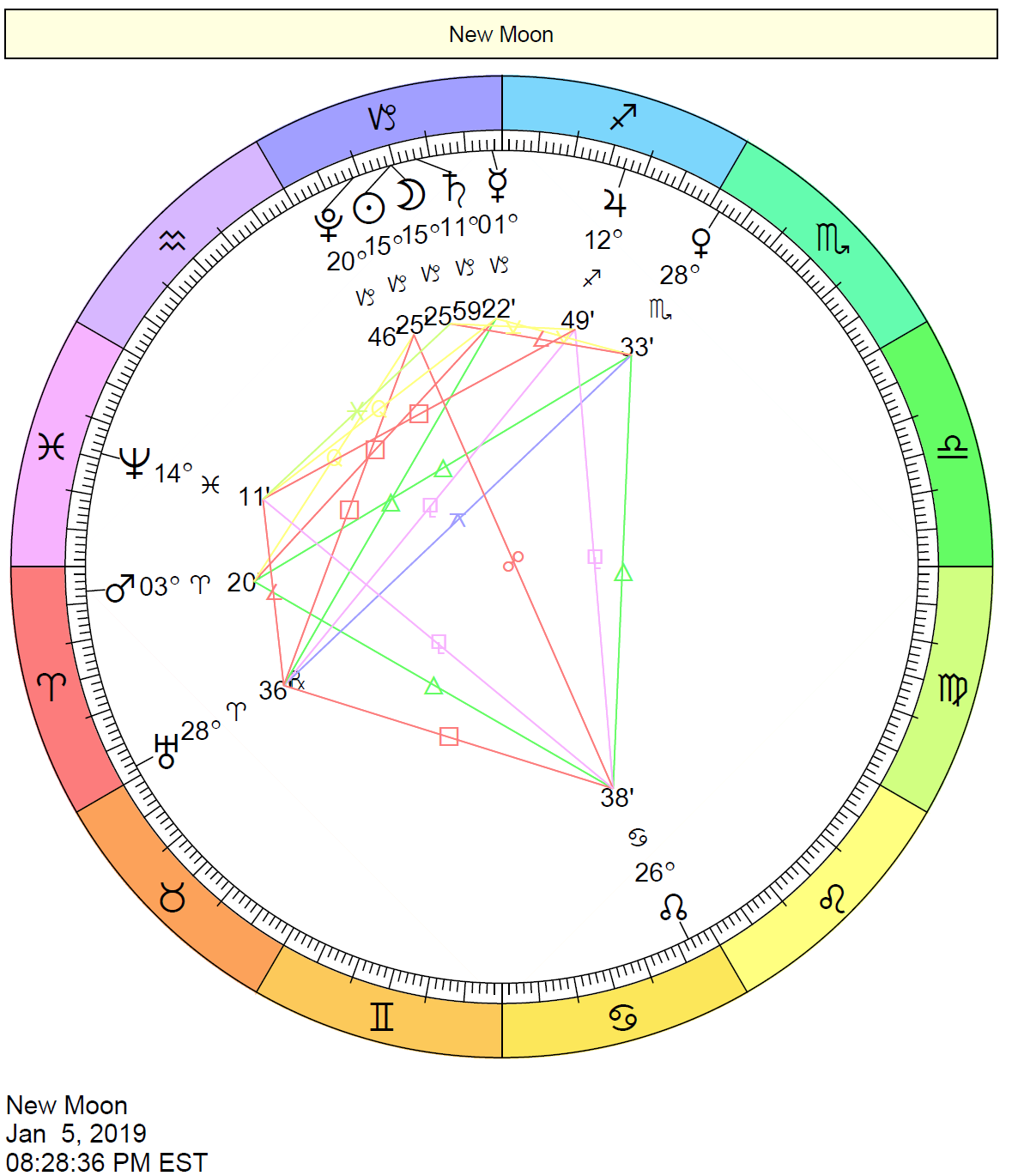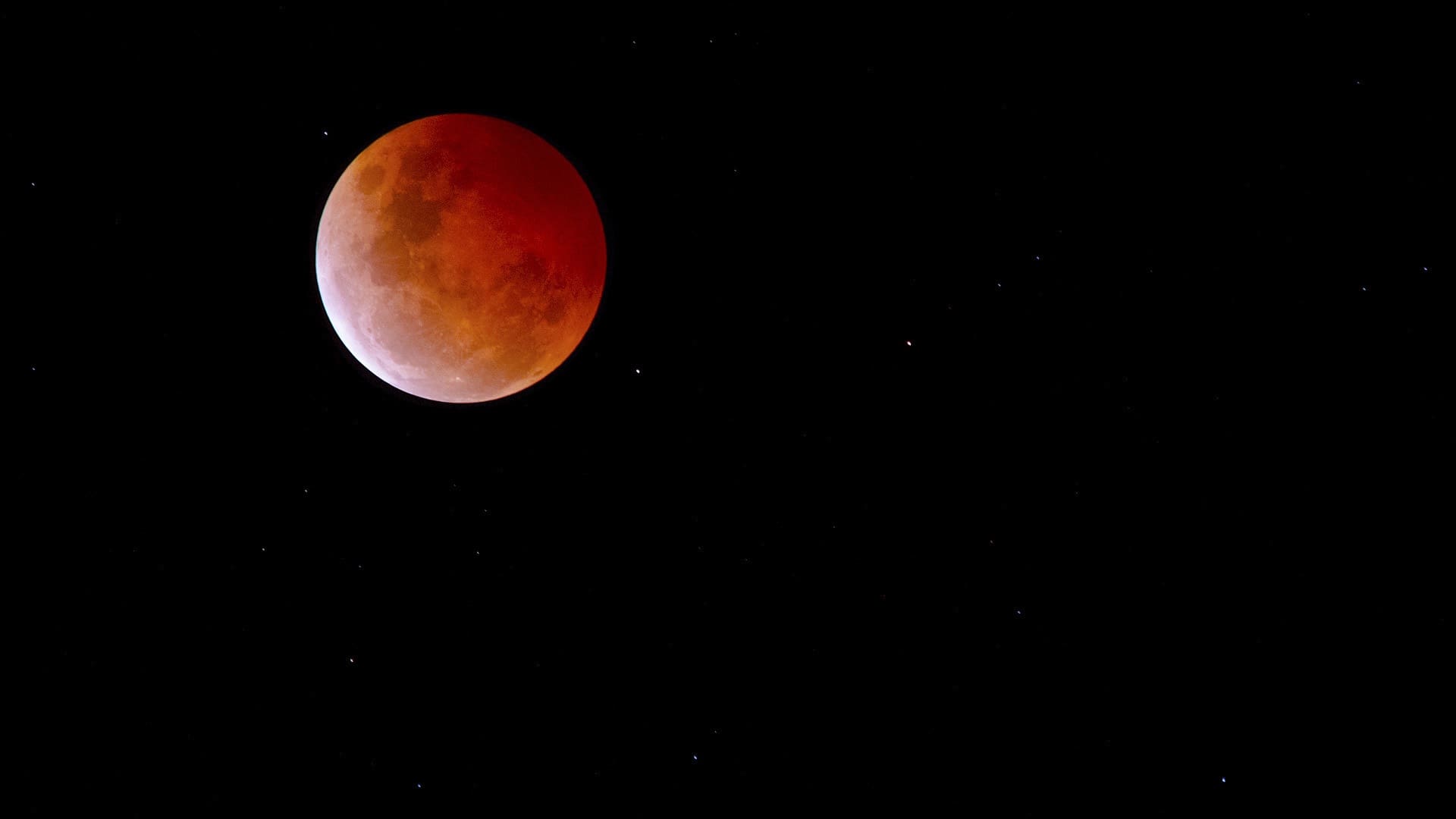- The "Trifecta" Lunar Eclipse on January 31st - Sky & Telescope
- 2019 Planetary Overview
- The Astrology of Year 2019
- Biggest Astronomy Events Coming in 2019
According to old editions of the Maine Farmer's Almanac , it occurred when a season has four full Moons, rather than the usual three. This type of "blue Moon" is found only in February, May, August, and November, one month before the next equinox or solstice. According to modern folklore, however, it's the second full Moon in a calendar month.
For more about this historical goof, and how it was discovered, see "What is a Blue Moon? Using the old, seasonal definition, the last occurrence happened in May and the next one will come in February Using the newer definition, we'll enjoy "blue Moons" both during January and again in March.
Because of this sequence, there'll be no full Moon at all in February — and that hasn't happened since But what about the "once in more than years" that various news stories claim?
Well, there was a "blue Moon" total lunar eclipse — one falling on the second full Moon of the month — visible pretty much all across North America on March 31, By the way, on that date the Moon was near apogee and therefore nearly as far away as it can be.
However, to find the most recent such occurrence you only need to go back to December 30, That event did occur at the Moon's orbital perigee, and it was visible throughout North America, Australia, and eastern Asia.
Going forward, we'll be treated to "blue Moon" total lunar eclipses on December 31, not at perigee, and a "miss" for North America and on January 31, 17 hours before perigee, and better for the West Coast.
As it goes around us, the Moon's distance from Earth center to center varies from about , miles , km at perigee to , miles , km at apogee. On March 19, , the full Moon almost exactly at perigee hugs the skyline of Boston, Massachusetts.
The disk appears distorted by atmospheric refraction, and its red hue results because the atmosphere has selectively scattered away blue light. Yet even skilled skygazers are challenged to see any difference in size or brightness between an especially close full Moon and an ordinary one.
April 11 - Mercury at Greatest Western Elongation.
The "Trifecta" Lunar Eclipse on January 31st - Sky & Telescope
The planet Mercury reaches greatest western elongation of This is the best time to view Mercury since it will be at its highest point above the horizon in the morning sky. Look for the planet low in the eastern sky just before sunrise.
April 19 - Full Moon. This full moon was known by early Native American tribes as the Full Pink Moon because it marked the appearance of the moss pink, or wild ground phlox, which is one of the first spring flowers. Many coastal tribes called it the Full Fish Moon because this was the time that the shad swam upstream to spawn.
April 22, 23 - Lyrids Meteor Shower. The Lyrids is an average shower, usually producing about 20 meteors per hour at its peak. The shower runs annually from April It peaks this year on the night of the night of the 22nd and morning of the 23rd.
These meteors can sometimes produce bright dust trails that last for several seconds. The waning gibbous moon will block out many of the fainter meteors this year, but if you are patient you should still be able to catch a few of the brightest ones. Meteors will radiate from the constellation Lyra, but can appear anywhere in the sky.
- 2019 Calendar;
- cancer weekly astrology forecast 28 january 2019 michele knight.
- .
- About Kelly Beatty.
May 4 - New Moon. May 6, 7 - Eta Aquarids Meteor Shower.
- january 15 love astrology;
- cancer traits compatibility;
- Planetary Overview.
The Eta Aquarids is an above average shower, capable of producing up to 60 meteors per hour at its peak. Most of the activity is seen in the Southern Hemisphere. In the Northern Hemisphere, the rate can reach about 30 meteors per hour. It is produced by dust particles left behind by comet Halley, which has known and observed since ancient times.
2019 Planetary Overview
The shower runs annually from April 19 to May It peaks this year on the night of May 6 and the morning of the May 7. The thin crescent moon will set early in the evening leaving dark skies for what should be a good show.

Meteors will radiate from the constellation Aquarius, but can appear anywhere in the sky. May 18 - Full Moon, Blue Moon. This full moon was known by early Native American tribes as the Full Flower Moon because this was the time of year when spring flowers appeared in abundance.
Since this is the third of four full moons in this season, it is known as a blue moon. But since full moons occur every The extra full moon of the season is known as a blue moon. Blue moons occur on average once every 2. June 3 - New Moon. June 10 - Jupiter at Opposition.
The giant planet will be at its closest approach to Earth and its face will be fully illuminated by the Sun. It will be brighter than any other time of the year and will be visible all night long. This is the best time to view and photograph Jupiter and its moons.
A medium-sized telescope should be able to show you some of the details in Jupiter's cloud bands. A good pair of binoculars should allow you to see Jupiter's four largest moons, appearing as bright dots on either side of the planet.
June 17 - Full Moon. This full moon was known by early Native American tribes as the Full Strawberry Moon because it signaled the time of year to gather ripening fruit. It also coincides with the peak of the strawberry harvesting season.
June 21 - June Solstice. The June solstice occurs at The North Pole of the earth will be tilted toward the Sun, which will have reached its northernmost position in the sky and will be directly over the Tropic of Cancer at This is the first day of summer summer solstice in the Northern Hemisphere and the first day of winter winter solstice in the Southern Hemisphere.
June 23 - Mercury at Greatest Eastern Elongation. July 2 - New Moon. July 2 - Total Solar Eclipse. A total solar eclipse occurs when the moon completely blocks the Sun, revealing the Sun's beautiful outer atmosphere known as the corona. The path of totality will only be visible in parts of the southern pacific Ocean, central Chile, and central Argentina.
A partial eclipse will be visible in most parts of the southern Pacific Ocean and western South America. July 9 - Saturn at Opposition. The ringed planet will be at its closest approach to Earth and its face will be fully illuminated by the Sun.
The Astrology of Year 2019
This is the best time to view and photograph Saturn and its moons. A medium-sized or larger telescope will allow you to see Saturn's rings and a few of its brightest moons. July 16 - Full Moon. This full moon was known by early Native American tribes as the Full Buck Moon because the male buck deer would begin to grow their new antlers at this time of year.
July 16 - Partial Lunar Eclipse. A partial lunar eclipse occurs when the Moon passes through the Earth's partial shadow, or penumbra, and only a portion of it passes through the darkest shadow, or umbra.
During this type of eclipse a part of the Moon will darken as it moves through the Earth's shadow. July 28, 29 - Delta Aquarids Meteor Shower. The Delta Aquarids is an average shower that can produce up to 20 meteors per hour at its peak. It is produced by debris left behind by comets Marsden and Kracht.
The shower runs annually from July 12 to August It peaks this year on the night of July 28 and morning of July The waning crescent moon will not be too much of a problem this year.
The skies should be dark enough for what could be a good show. August 1 - New Moon. August 9 - Mercury at Greatest Western Elongation. August 12, 13 - Perseids Meteor Shower.
The Perseids is one of the best meteor showers to observe, producing up to 60 meteors per hour at its peak. It is produced by comet Swift-Tuttle, which was discovered in The Perseids are famous for producing a large number of bright meteors.
Biggest Astronomy Events Coming in 2019
The shower runs annually from July 17 to August It peaks this year on the night of August 12 and the morning of August The nearly full moon will block out most of the fainter meteors this year, but the Perseids are so bright and numerous that it could still be a good show.
Meteors will radiate from the constellation Perseus, but can appear anywhere in the sky. August 15 - Full Moon. This full moon was known by early Native American tribes as the Full Sturgeon Moon because the large sturgeon fish of the Great Lakes and other major lakes were more easily caught at this time of year.
August 30 - New Moon. September 9 - Neptune at Opposition. The blue giant planet will be at its closest approach to Earth and its face will be fully illuminated by the Sun. While it traverses rather remote areas, it also crosses several observatories, which means you might be able to witness the eclipse online.
Not to worry North America, it will only be a few more years until a total eclipse traverses the United States and a portion of Canada in April , according to Earthsky. A 71 percent solar eclipse will occur on Jan. There will be two lunar eclipses in , including a total lunar eclipse on Jan.
A partial 65 percent lunar eclipse will be visible in Africa, Europe, southern Asia and Australia on July The best meteor showers coming this year include the brief Quadrantids meteor shower on Jan. It will put on a good show because the waning moon will only be 5 percent illuminated, keeping the night sky nice and dark to better see the shooting stars.
The Eta Aquariids on May 6 should also be a good bet to see lots of falling stars as the waxing moon will only be 4 percent illuminated. Other meteor showers to check out include the Arietids on June 7, the Orionids on Oct.
- Top Astronomy Events For 2019;
- The “Trifecta” Lunar Eclipse on January 31st.
- !
- pisces daily horoscope for february 19 2019.
- Top Astronomy Events For - Universe Today?
- Astronomy Calendar of Celestial Events - Sea and Sky.
